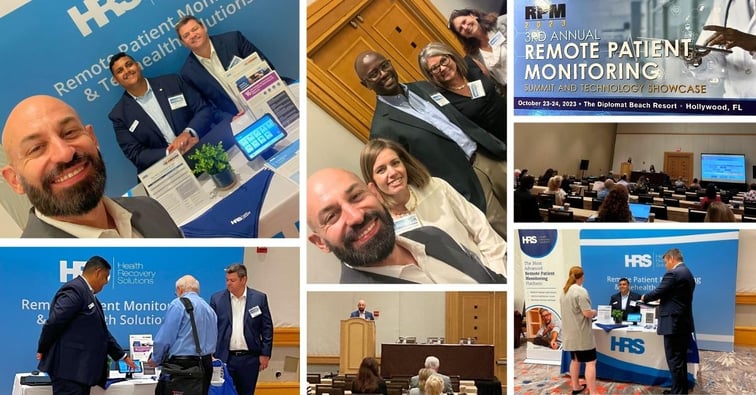The 2023 Remote Patient Monitoring Summit & Technology Showcase hosted by Business Research & Intelligence Network examined key and emerging trends in remote patient monitoring (RPM) to improve patient outcomes through transformed home care management, healthcare delivery and accessibility, policy and reimbursement updates, patient engagement, and reduced spending costs. Attendees shared and learned about innovative care models (like Lee Health's remote patient management program), new research, and advances in the world of virtual care.

Here are six key takeaways from the RPM summit:
-
Billing is the biggest pain point
Attendees overwhelmingly agreed that billing is the biggest pain point in RPM. They shared stories of manual processes, complicated regulations, and resource-intensive efforts to get paid. Many attendees said that if a vendor could solve their billing problems, they would be the vendor of choice.
-
Protocols and staff matter
RPM programs rely on clear and concise protocols, as well as staff who are trained and motivated to follow them. Attendees shared that they are looking for staff with passion and energy for RPM, rather than those who are simply looking for a final stop before retirement. To that end, the field of telehealth nursing is a huge area of opportunity for nursing students and graduates seeking technology-driven solutions to improve patient outcomes.
- Education is critical
RPM programs need to educate both patients and providers about the benefits of RPM. This is especially important in rural and underserved communities. Attendees also emphasized the importance of internal stakeholder management, as they need to convince teams to participate, value, and invest in RPM.
- Data is king
RPM programs rely on data to prove their value to payers, manage risk, and improve outcomes. Attendees shared that they need more data, synchronized across systems. Many attendees expressed that their EMR data alone was not enough, and look to their vendor partners for additional analytics to help them manage their program.
- Outcomes matter more than reimbursements
When it comes to ROI, RPM programs are more focused on outcomes and capacity improvements (more beds) than reimbursements. Attendees shared that they are looking for solutions that can help them to improve patient care and reduce costs.
Transforming Care Delivery: The Path to ROI with RPM
In this 30-minute webinar, you'll learn how Health Recovery Solutions has helped 400+ healthcare organizations build sustainable RPM programs that drive ROI.
- RPM is the future of healthcare
Despite the challenges, attendees were optimistic about the future of RPM. They believe that RPM is the key to improving access to care, reducing costs, and delivering better outcomes for patients.
Overall, the 3rd Annual RPM Summit was a valuable event that brought together leaders in the RPM field to share insights and best practices. The key takeaways from the summit provide a roadmap for the future of RPM and highlight the areas where innovation is needed.
For more information on the latest innovations and trends in RPM, check out the 2023 Vision to Virtual webinar series from HRS. This year, we are exploring the proven clinical and business outcomes driven by HRS telehealth and RPM programs and how healthcare organizations can support their staff, scale their programs, and demonstrate results.
To find HRS at an upcoming conference near you, visit the Events section of our website.